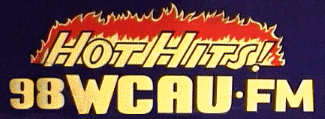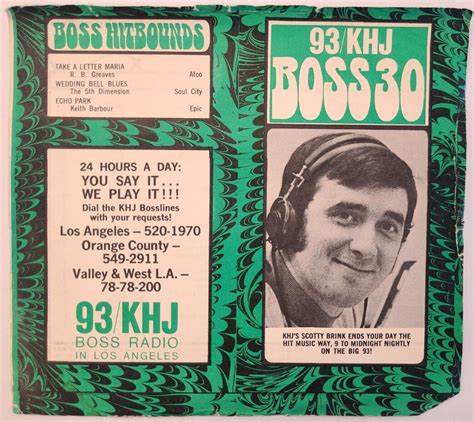
Mike Joseph’s Radio Legacy
In the late 1970s and early 1980s, a seismic shift rocked the radio landscape. At its epicenter was Mike Joseph, a visionary programmer who breathed new life into the stagnating Top 40 format with his revolutionary “Hot Hits” approach. This innovative programming strategy not only revitalized struggling stations but also helped usher in the era of Contemporary Hit Radio (CHR), leaving an indelible mark on the industry that resonates to this day.
The Genesis of Hot Hits
Mike Joseph’s journey to creating Hot Hits began long before the format’s heyday. A veteran programmer with a keen ear for audience preferences, Joseph had already made his mark on stations like WKBW in Buffalo and WKNR in Detroit. However, it was in 1977, at WTIC-FM in Hartford, Connecticut, that the seeds of Hot Hits were first planted.
WTIC-FM, long a bastion of classical music, was floundering in the ratings. Joseph was brought in to shake things up, and shake things up he did. Rebranding the station as “96 Tics,” Joseph implemented a tightly formatted playlist of current hits, high-energy jingles, and minimal DJ chatter. The result was immediate and dramatic – within months, WTIC-FM had rocketed to the top of the Hartford ratings.
While the term “Hot Hits” wasn’t yet in use, the key elements of the format were already in place. Joseph’s approach stood in stark contrast to the increasingly album-oriented and personality-driven direction many Top 40 stations had taken. By focusing exclusively on current hits and maintaining a breakneck pace, Joseph created a sound that was impossible to ignore. The true birth of Hot Hits as we know it came in 1979 at WFBL in Syracuse, New York. Rebranded as “Fire 14,” WFBL became the first station to use the term “Hot Hits” on air. The format was further refined, with Joseph implementing a strict rotation of the top 30 current hits, punctuated by frequent jingles and minimal DJ talk.
But it was in 1981 that Hot Hits truly exploded onto the national scene. WCAU-FM in Philadelphia, struggling after a series of format changes, brought in Joseph to work his magic. The result was “98 Now,” a station that would become the blueprint for Hot Hits across the country.
WCAU-FM’s success was immediate and overwhelming. Within months, the station had gone from an also-ran to dominating the Philadelphia ratings. The Hot Hits sound – a nonstop barrage of current hits, high-energy jingles, and tight production – was unlike anything else on the dial.
The success of WCAU-FM led to a rapid expansion of the Hot Hits format. In quick succession, Joseph launched Hot Hits stations in major markets across the country:
WBBM-FM in Chicago became “B96”
WHYT in Detroit adopted the “96 Now” moniker
KITS in San Francisco rebranded as “Hot Hits 105”
WMAR-FM in Baltimore became “Hot Hits 106”
Each of these stations saw dramatic ratings increases upon adopting the Hot Hits format. In many cases, they went from the bottom of the ratings to the top in a matter of months.
The Hot Hits Sound
What made Hot Hits so distinctive? At its core, the format was built on a few key principles:
A laser focus on current hits: Hot Hits stations played only the top 30-50 songs on the charts, with no recurrents or oldies.
Frequent rotation: The top hits would play as often as once an hour, ensuring listeners would hear their favorite songs multiple times a day.
High-energy jingles: Produced by the Johnny Mann Singers, these short, catchy jingles became a signature element of the Hot Hits sound.
Minimal DJ talk: Announcers were instructed to keep their breaks short and punchy, maintaining the music’s momentum.
Tight production: Every element of the broadcast was carefully timed and produced to maintain a consistent, fast-paced flow.
The result was a radio station that sounded perpetually exciting, always in motion, and impossible to tune out.
The Hot Hits DJs
While Joseph’s format emphasized music over personality, the Hot Hits stations still attracted and developed some of the top talent in radio. At WCAU-FM, personalities like Terry “Motormouth” Young, Scott Walker, and Paul Barsky became local celebrities.
Many DJs who worked under Joseph describe the experience as both exhilarating and demanding. One former Hot Hits jock, who wished to remain anonymous, recalled: “Working for Mike was like radio boot camp. Every break was timed to the second. You had to hit your marks perfectly or you’d hear about it. But man, when it all came together, there was nothing like it in radio.”
Joseph’s leadership style was often described as intense and uncompromising. He had a clear vision for how his stations should sound and expected nothing less than perfection from his staff. Another former Hot Hits DJ shared: “Mike could be tough, no doubt about it. But he also had an incredible ear for talent. If you could hack it in a Hot Hits station, you could work anywhere in radio.”
Many Hot Hits alumni went on to successful careers in major markets. Charlie Van Dyke, who worked at several Joseph-consulted stations, became one of the most recognizable voiceover artists in the industry. Others, like Gary Bryan from WBBM-FM, went on to program major market stations themselves.
Promotions and Contests
Hot Hits stations were known for their high-energy promotions and contests. These events helped to create a strong bond between the stations and their listeners, while also generating significant publicity.
One of the most famous Hot Hits promotions was the “Hot Hits Money Machine.” Listeners would be invited to step into a booth filled with swirling cash and grab as much as they could in a set time. These events would draw massive crowds and generate extensive media coverage.
Other popular promotions included:
“Instant Jackpot” contests, where listeners could win cash by being the correct numbered caller
“Secret Sound” contests, challenging listeners to identify mysterious audio clips
Concert ticket giveaways, often involving elaborate scavenger hunts across the city
These promotions not only boosted ratings but also helped to cement Hot Hits stations as an integral part of their communities.
The Music Industry Connection
The influence of Hot Hits extended far beyond the radio dial. The format’s tight playlists and heavy rotation of hit songs could make or break a record’s success. As a result, record labels and artists cultivated close relationships with Hot Hits programmers and DJs.
Rosalie Trombley, the legendary music director at CKLW (which, while not officially a Hot Hits station, shared many of the format’s characteristics), recalled: “The record promoters were always at our door. They knew that if they could get a song on our playlist, it would likely become a hit nationwide.”
Hot Hits stations were often the first to break new artists and songs. Acts like Madonna, Michael Jackson, and Prince all benefited from early and heavy rotation on Hot Hits stations.
The Decline of Hot Hits
By the mid-1980s, the Hot Hits format began to lose its luster. Several factors contributed to its decline:
Overexposure: As more stations adopted the format, it became less distinctive.
Listener fatigue: The relentless pace and repetition of Hot Hits began to wear on some listeners.
Rise of MTV: The music video revolution changed how audiences consumed music, making radio less central to music discovery.
Format evolution: Many Hot Hits stations began to evolve into more traditional CHR formats, incorporating recurrents and allowing for more personality.
By 1986, most of the original Hot Hits stations had moved away from the strict format. WCAU-FM, the flagship Hot Hits station, flipped to oldies as WOGL in 1987.
The Legacy of Hot Hits
While the heyday of Hot Hits was relatively short-lived, its impact on the radio industry has been long-lasting. Many of the programming principles developed by Mike Joseph continue to influence radio formats today. The emphasis on tight playlists, consistent branding, and strategic placement of non-music elements remains a cornerstone of successful radio programming.
Moreover, the Hot Hits era produced a generation of talented broadcasters who went on to shape the industry for decades to come. Programmers like Steve Rivers, who worked with Joseph at WZOU in Boston, went on to program major market stations and develop new formats.
The format also left an indelible mark on popular culture. The sound of Hot Hits has become synonymous with the music and lifestyle of the early 1980s. This nostalgia factor has led to the creation of online stations and tribute sites that aim to recreate the energy and excitement of the original format for new generations of listeners.
Mike Joseph’s Legacy
Mike Joseph passed away on April 14, 2018, at the age of 90. His death marked the end of an era in radio programming, but his influence continues to be felt throughout the industry.
Those who worked with Joseph remember him as a demanding but visionary leader. One former Hot Hits PD reflected: “Mike could be tough, but he was always fair. He had an incredible instinct for what would work on the air. If you were willing to put in the work and follow his system, you’d see results.”
Joseph’s approach to radio was rooted in a deep understanding of audience psychology and a relentless focus on giving listeners what they wanted. As he once said in an interview: “I’ve got one helluva brainwashing job to do when launching a station. That’s why we use so many jingles – to drill the station’s identity into the listener’s mind.”
Lessons for Today’s Broadcasters
For current radio professionals, the story of Hot Hits offers several valuable lessons:
The power of a cohesive brand identity: Hot Hits stations had a consistent sound and image that made them instantly recognizable to listeners.
The importance of adapting to changing listener habits: Joseph recognized the need for a faster-paced, more music-intensive format as listener preferences evolved.
The value of research and data: Joseph was meticulous in his use of music research and ratings data to refine his format.
The role of community engagement: Hot Hits stations used promotions and contests to become an integral part of their listeners’ lives.
The importance of innovation: Joseph wasn’t afraid to challenge conventional wisdom and try new approaches to programming.
As the radio industry continues to evolve in the digital age, the principles that made Hot Hits successful – innovation, adaptability, and a deep understanding of audience preferences – remain as relevant as ever. The legacy of Mike Joseph and the Hot Hits format continues to inspire and inform broadcasters around the world.
In an era of fragmented media and endless entertainment options, the story of Hot Hits serves as a reminder of radio’s unique power to unite listeners through music, personality, and shared experiences. For those who experienced it firsthand and for new generations discovering its impact, Hot Hits remains a high-water mark in the history of broadcasting – a time when radio truly was the hottest thing on the dial.
Written by: studio
Similar posts
Recent Comments
No comments to show.-

Retro Rewind
With Kenneth Dell
For every Show page the timetable is auomatically generated from the schedule, and you can set automatic carousels of Podcasts, Articles and Charts by simply choosing a category. Curabitur id lacus felis. Sed justo mauris, auctor eget tellus nec, pellentesque varius mauris. Sed eu congue nulla, et tincidunt justo. Aliquam semper faucibus odio id varius. Suspendisse varius laoreet sodales.
close Top popular
© Copyright 2025 Aircheck Radio - is a proud listener supported 501(c)(3) nonprofit organization











